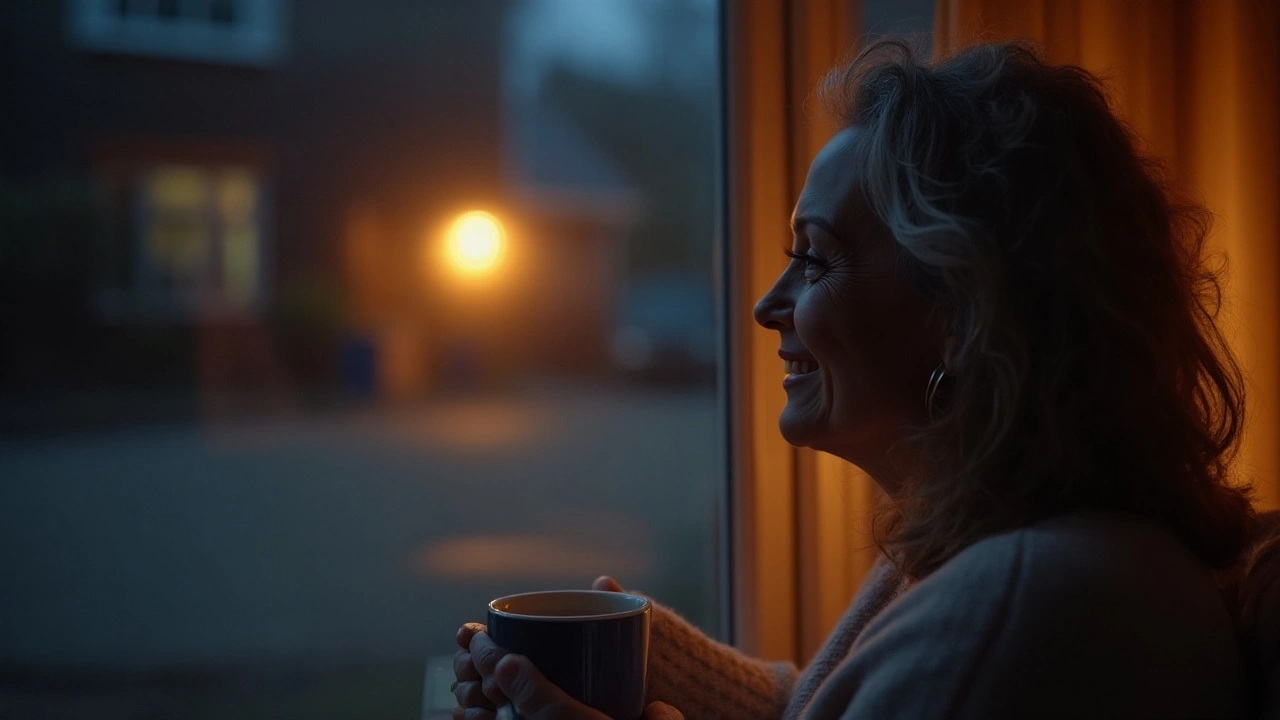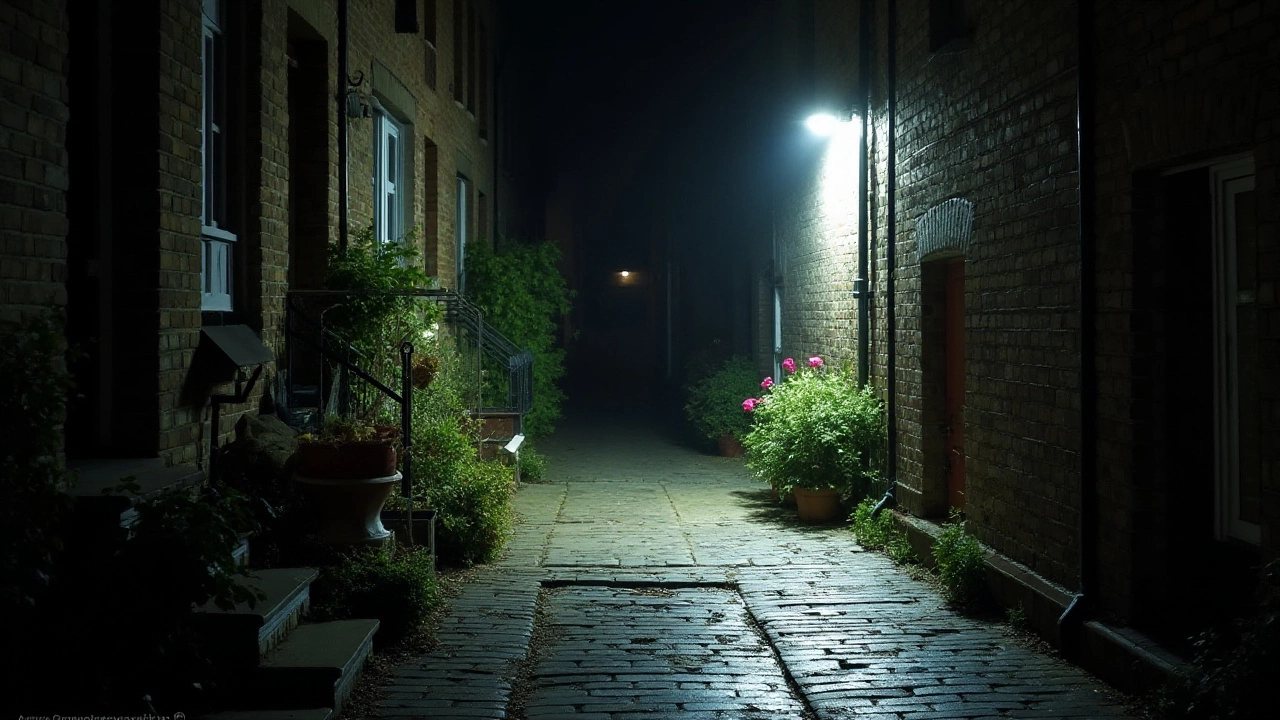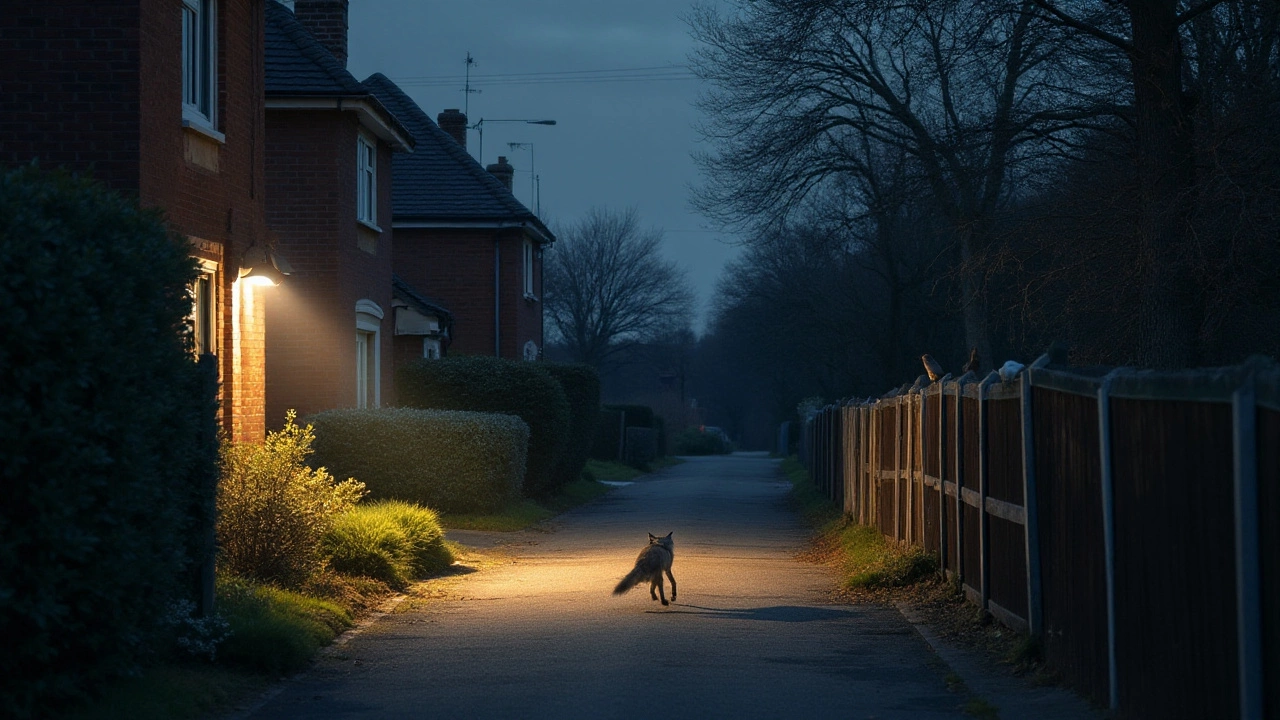Imagine being able to spot a potential intruder before they even reach the front door. Outdoor motion lights offer a simple solution to enhance the security of your home by lighting up whenever they detect movement. This is a compelling deterrent for burglars, who often prefer to work under the cover of darkness. The sudden illumination can startle and dissuade someone with ill intent, turning their focus to a less protected target.
Not only do they improve visibility, but these lights also provide a sense of safety for homeowners returning after dark. They can illuminate paths, entrances, and driveways, ensuring you can navigate safely. While considering their placement, it's important to think about areas that are most vulnerable or heavily trafficked around your home.
Installing these lights doesn't require a degree in electrical engineering—most models are designed for easy installation. Whether you're a new homeowner or looking to upgrade your current security system, motion sensor lights stand as an affordable and effective line of defense. As we explore their workings and benefits, let's see how this simple tool can fit seamlessly into your security plan.
- How Motion Lights Work
- Benefits of Outdoor Motion Lights
- Choosing the Right Placement
- Avoiding Common Mistakes
How Motion Lights Work
Turning to the technical workings of outdoor motion lights, the magic lies in the clever use of sensors. Typically, these lights use Passive Infrared (PIR) sensors to detect motion. These sensors are sensitive to the infrared radiation emitted by warm bodies, such as humans or animals, which causes them to activate the light. When someone enters the detection field, the sensor picks up on the change in infrared radiation, triggering the light to turn on. It’s an elegant solution that uses a natural phenomenon to prevent crime.
Many systems allow you to adjust the sensitivity of these sensors, which can be quite crucial in environments buzzing with constant activity like passing cars or fluttering leaves. High-end models even include features like dual-beam sensors, which help minimize false alarms by requiring movement to be detected by both beams for the light to turn on. This technology ensures that your outdoor security lights work smarter and not just harder at keeping your home safe.
According to a report by The National Institute of Justice, "Proper illumination can reduce the fear of crime, improve community interactions, and increase the rejection rate of potential lawbreakers."
Now, most people think of motion lights illuminating a large area immediately, flooding spaces with light ready to scare off any potential intruder. However, it's interesting to note that the field of detection can be quite wide or reasonably narrow, depending on how they are set up. Turning the lights into effective security tools often depends on the coverage area and the positioning of the lights. Correct positioning can extend their reliability, ensuring they trigger when unwanted guests come close. They operate almost effortlessly, requiring minimal maintenance, apart from occasional bulb changes or cleaning the sensor lens. The advanced technology behind these systems keeps our homes safer at night while we rest.
Manufacturers continuously innovate this space, often including added conveniences like dusk-to-dawn sensors, which keep lights off during the day to save energy. Understanding the inner workings of these features not only helps users set up their lights more effectively but also puts into perspective how much thought goes into these common fixtures. Whether they’re solar-powered or hardwired, their role in home security cannot be overstated. Outdoor security lights are continuously evolving, integrating into smart home systems for seamless operation.
The longevity and reliability of these lights are tied closely with installation and build quality. Durable designs with weather-resistant housing are more likely to provide years of service without fail. When you take into account how these lights work and the technology behind them, it's clear how they play a significant role in warding off burglars. This knowledge empowers homeowners to make informed choices about the lighting solutions that will best secure their property. It’s not just about light—it’s all about providing peace of mind for households everywhere.

Benefits of Outdoor Motion Lights
When it comes to fortifying your home against break-ins, installing outdoor security lights can provide a significant deterrent to burglars. The primary benefit of these lights is the way they catch people by surprise. Before they even realize what's happening, the area is suddenly illuminated, drawing attention to their presence. This can act as a psychological barrier, making them reconsider their actions and seek an easier target elsewhere. Moreover, these lights can enhance the sense of security for you and your family. It’s comforting to know that any movement around your home is under a watchful light.
Another significant advantage is the enhancement of visibility at night. As the evening falls, pathways, entrances, and driveways can become quite hard to navigate. With motion detectors, you won’t have to worry about tripping in the dark or fumbling for keys. These lights can make evening arrivals smoother and safer. Not only do they light up potential danger areas like the stairs or garden paths, but they also allow for better monitoring of outdoor activity. This is particularly useful for identifying other visitors like delivery personnel or late-night guests without having to step out into the unknown.
Energy efficiency is another compelling aspect. Unlike traditional lighting systems that stay on all night, motion lights operate only when needed, which can lead to substantial savings on energy costs. According to a study by the International Lighting Research Center, motion-activated lighting can reduce light pollution, as it minimizes the time lights are on unnecessarily. If you are concerned about environmental impact and conserving resources, this solution checks all the boxes.
The U.S. Department of Energy states, "By turning on only when motion is detected, these lights conserve a significant amount of energy compared to constant illumination. This feature alone justifies their use in both residential and commercial settings."
These lights aren't just about stopping crime; they also have benefits for personal convenience. Imagine carrying in groceries late at night as the porch light welcomes you home. Many models have adjustable sensitivity levels and timers, so you can tailor their operation to suit your needs. With technological advancements, there are even options to integrate these lights with smart home systems, allowing owners to monitor and control them remotely. This integration can enhance both safety and convenience, making home safety smarter and more manageable.
In the age where security is paramount, burglary prevention measures like outdoor motion lights offer peace of mind without a hefty price tag or complicated installation. They’re a relatively simple upgrade with far-reaching effects that could make a big difference in maintaining safety and deterring potential threats. If you're weighing the options for home security, these lights provide an effective, efficient, and versatile addition to your defenses.

Choosing the Right Placement
When it comes to setting up outdoor motion lights, positioning is everything. The right placement can mean the difference between a well-protected home and one that still leaves areas vulnerable. You want to make sure that your lights cover all critical spots where burglars are most likely to approach. The first consideration is to cover entry points such as front and back doors, garage entrances, and any large windows that could provide easy access to the inside of your home. It's imperative to place these lights high enough so they aren't easily tampered with but still capable of detecting motion effectively.
Another crucial spot to light up is along pathways leading to your doors. Many homeowners overlook the importance of illuminating driveways and walkways, which can become prime approaches for unwelcome guests. While installing, consider the direction of the motion sensor's detection field to optimize its range without unnecessary activations from the street or neighboring properties. Overlapping the coverage areas of multiple motion lights can eliminate blind spots, ensuring your entire perimeter is well-guarded at night.
The yard is equally important, especially if it features side gates or fences that a burglar could sneak around. Trees, bushes, and large garden features can create natural hiding spots, and strategically placed lights can neutralize these threats. Consider using fixtures that allow adjusting the angle and range of detection to suit your landscape's unique contours. By tilting the sensors slightly downward, you can focus on creeping intruders without picking up every passing bird or swaying branch.
When installing motion lights, take into account the type of technology used. Some sensors rely on heat detection, while others detect movement through visual or radar signals. Each has its benefits and limitations depending on the environment. An expert from the International Association of Certified Home Inspectors once remarked,
"The effectiveness of motion sensor lights hinges on their sensitivity settings and proper calibration. Every yard is different, and ensuring the light reacts only when you want it to is paramount."
Common Mistakes to Avoid
Even with the right intentions, homeowners sometimes make missteps in installation. A frequent error is covering too wide an area, which can lead to excessive tripping or failing to account for how pets might move within the sensor's field. Additionally, leaving gaps in coverage or placing lights too far apart can reduce their effectiveness. As a guide, aim for an overlapping arrangement of lights with at least a ten-foot radius of detection around each unit. Prioritize entry points and use overlapping fields of detection to close gaps. Don't forget to consider the energy source; solar-powered lights, while convenient, may not perform as well in shaded areas or during cloudy seasons.
Avoiding Common Mistakes
Setting up outdoor security lights might seem straightforward, but there are a few common pitfalls that can lessen their effectiveness. One of the most frequent mistakes is poor placement. Installing motion sensors too high or low can result in unreliable detection. For instance, when the light is too high, it may miss lower body movement. Keeping sensors at a reasonable height, ideally around six to ten feet, often ensures they catch the right kind of motion.
Then there's the issue of sensitivity settings. Homeowners might set their sensors too sensitive, causing lights to trigger unnecessarily from every fluttering leaf or passing car, leading to frustration and eventual disuse. To prevent this, spend some time adjusting these settings. Aim for a balance where the motion detectors are responsive but not hyperactive, saving the illumination for activities that matter.
Another notable mistake involves power sources. Ensure you’re not overloading circuits. When plugged into circuits with high-demand appliances, lights might flicker or fail. An optimal setup involves dedicated circuits or at least one with a modest power draw. Solar-powered options can bypass this issue, but they require sufficient sunlight exposure during the day.
Weather Concerns and Maintenance
Weather is another factor that humans often overlook, especially in areas with harsh climates. Corrosion or moisture can affect certain models, so choosing lights rated for all-weather use is crucial. Regular maintenance, such as checking for cobwebs or leaves around sensors, keeps things running smoothly. Just like any outdoor device, these lights need basic care to function optimally.
"The key to security lighting is regular maintenance and correct installation," notes security expert Tom Gretzky. "A bit of foresight saves a lot of hassle down the line."
Burglary prevention largely depends on strategic use of these efficient tools. It's not solely about the equipment you pick but how you employ it. By avoiding these mistakes, homeowners can maximize the effectiveness of their lights, adding a lay er of home safety that fits seamlessly into the daily routine.

